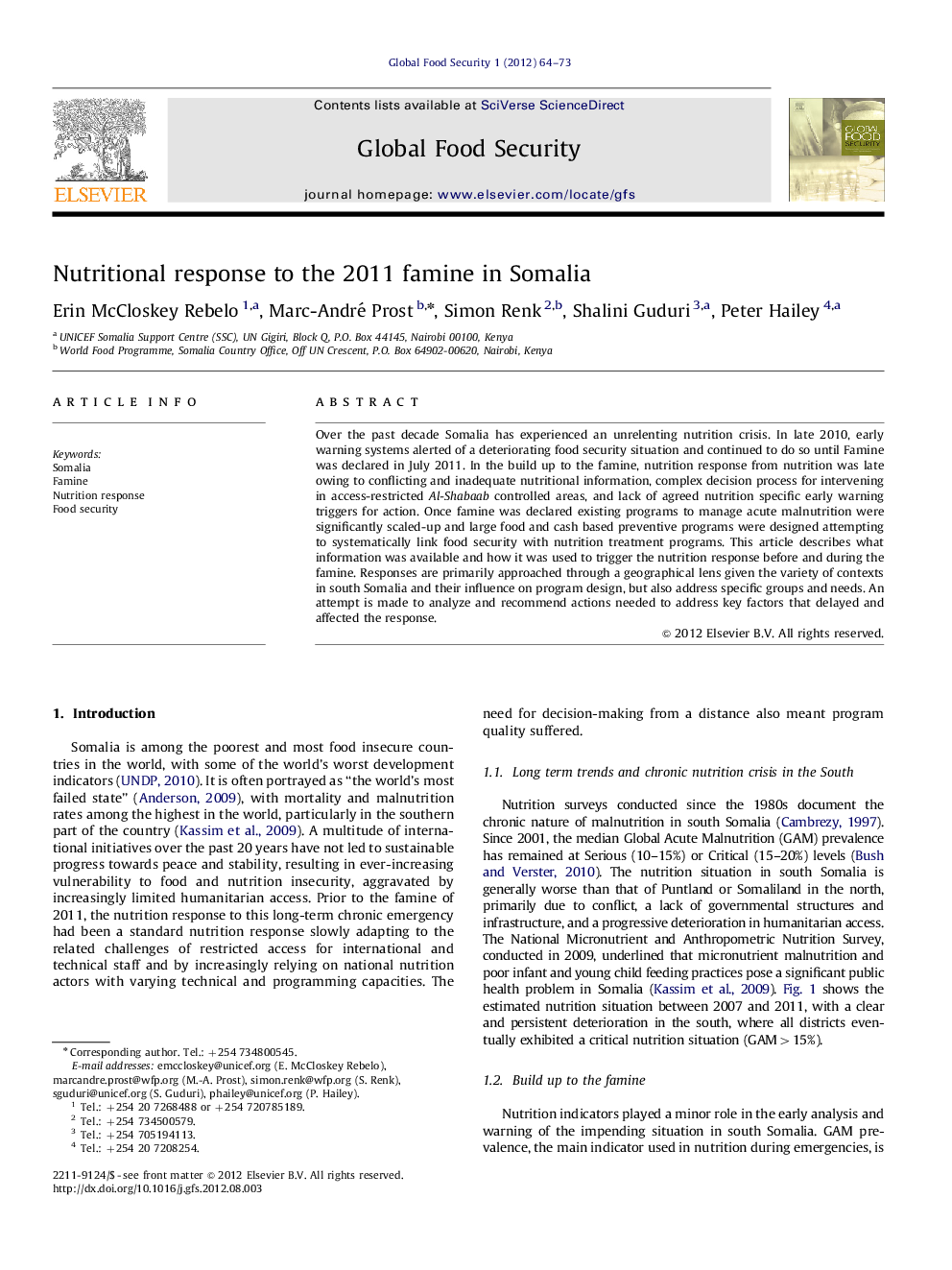| Article ID | Journal | Published Year | Pages | File Type |
|---|---|---|---|---|
| 1047624 | Global Food Security | 2012 | 10 Pages |
Over the past decade Somalia has experienced an unrelenting nutrition crisis. In late 2010, early warning systems alerted of a deteriorating food security situation and continued to do so until Famine was declared in July 2011. In the build up to the famine, nutrition response from nutrition was late owing to conflicting and inadequate nutritional information, complex decision process for intervening in access-restricted Al-Shabaab controlled areas, and lack of agreed nutrition specific early warning triggers for action. Once famine was declared existing programs to manage acute malnutrition were significantly scaled-up and large food and cash based preventive programs were designed attempting to systematically link food security with nutrition treatment programs. This article describes what information was available and how it was used to trigger the nutrition response before and during the famine. Responses are primarily approached through a geographical lens given the variety of contexts in south Somalia and their influence on program design, but also address specific groups and needs. An attempt is made to analyze and recommend actions needed to address key factors that delayed and affected the response.
► Six months prior to the famine the situation was critical though not unusual. ► In the build up EWS and monitoring data failed to detect rapid and large deterioration. ► Lack of access meant the decision process was slow and the response late. ► Treatment services were scaled-up and linked to food security interventions. ► The famine calls for redefining triggers for action in the nutrition sector.
